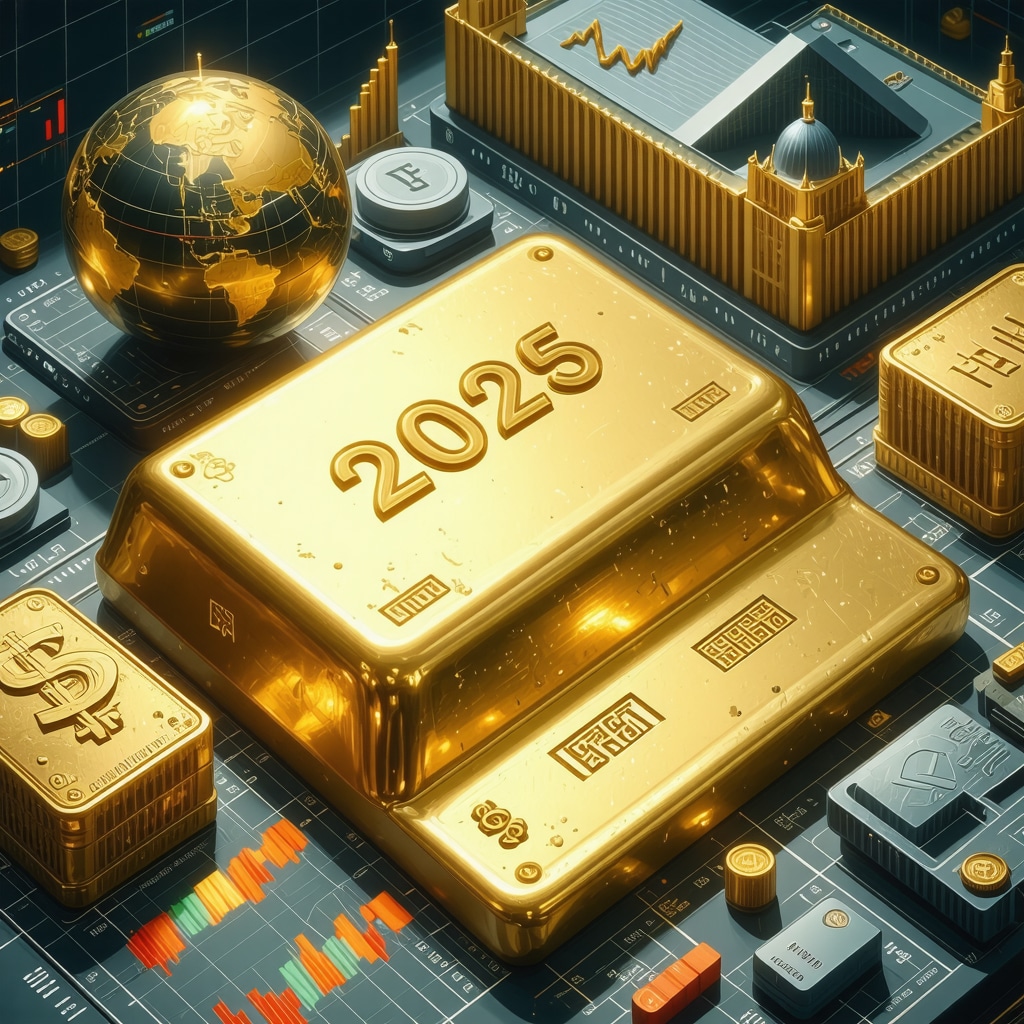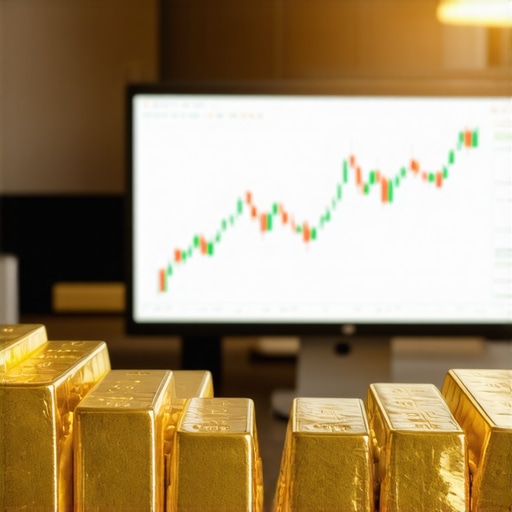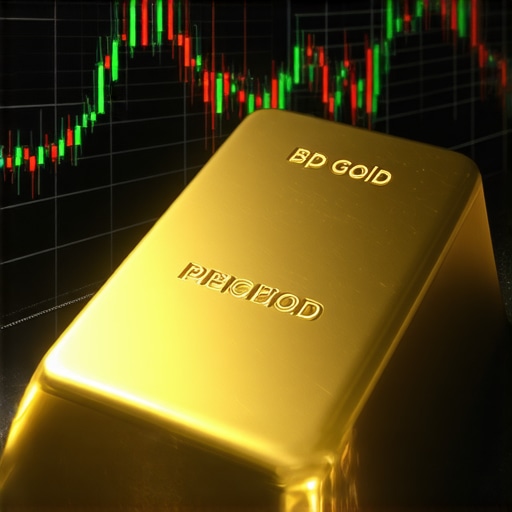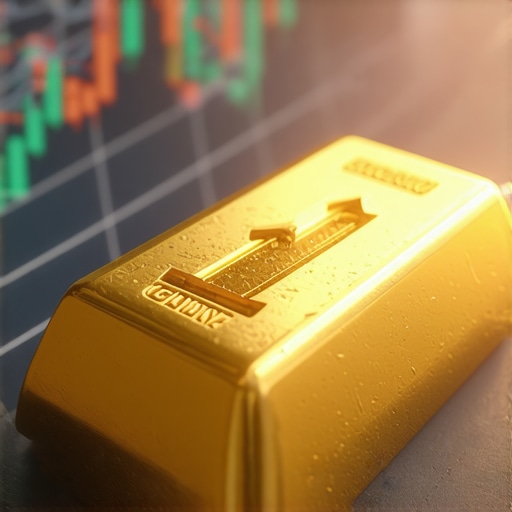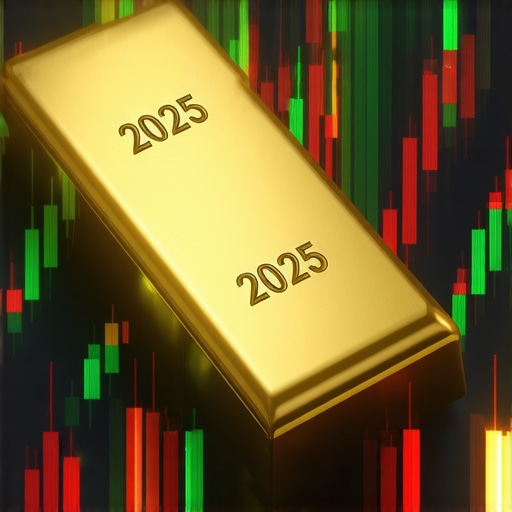Unveiling the Complex Web of Gold Price Drivers in 2025: An Expert’s Perspective
As we navigate the intricate landscape of 2025, understanding the multifaceted factors influencing gold prices is paramount for seasoned investors. Gold, often regarded as a barometer of global economic stability, is affected by a confluence of macroeconomic, geopolitical, and market-specific variables. This analysis delves into the advanced dynamics shaping gold’s trajectory this year, emphasizing the importance of nuanced comprehension for strategic investment decisions.
Economics and Monetary Policy: The Core Foundations of Gold Valuation
Central banks’ monetary policies remain pivotal in gold price fluctuations. In 2025, despite a trend towards monetary tightening in several economies to combat inflation, some nations continue to adopt unconventional easing measures. The delicate balance between interest rates and inflation expectations directly impacts gold’s appeal as a hedge. As noted by the International Monetary Fund in recent white papers, the interplay of real yields and dollar strength shapes gold’s relative attractiveness.
Geopolitical Tensions and Political Stability: Catalysts for Safe-Haven Flows
Political unrest and geopolitical conflicts have historically driven safe-haven demand for gold. In 2025, ongoing tensions in various regions—ranging from trade disputes to localized conflicts—generate volatility that propels gold prices upward. The unpredictability stemming from elections, policy shifts, or diplomatic crises necessitates vigilant monitoring of global political landscapes, as these factors often override traditional economic indicators in influencing investor sentiment.
Market Trends and Investor Behavior: The Subtle Art of Sentiment Analysis
Market sentiment, driven by institutional strategies and retail investor psychology, also plays a crucial role. The proliferation of algorithmic trading and data analytics means that gold price movements are increasingly driven by complex algorithms interpreting macroeconomic signals. Additionally, the rising interest in gold ETFs and futures trading in 2025 reflects a shift towards more sophisticated and liquid investment vehicles, which can amplify volatility or stabilize prices depending on prevailing strategies.
What Are the Most Surprising Market Drivers Influencing Gold in 2025?
One of the more unexpected influences this year has been the impact of technological advancements in gold mining and recycling, which alter supply-side dynamics. Innovations in sustainable mining and the growing acceptance of recycled gold reduce supply constraints, subtly shifting the traditional supply-demand equilibrium. This trend, coupled with central bank policies and geopolitical events, creates a complex environment where gold prices can diverge from conventional expectations.
For investors seeking to deepen their understanding, exploring best gold investment strategies for 2025 offers vital insights into tactical positioning. Engaging with expert analyses and participating in informed discourse is essential for navigating this volatile yet opportunity-rich terrain.
In conclusion, the drivers of gold prices in 2025 are rooted in a sophisticated matrix of economic policies, geopolitical developments, and market psychology. Staying ahead requires not only monitoring traditional indicators but also embracing emerging trends such as technological innovations and shifting investor behaviors.
The Hidden Forces Shaping Gold in 2025: Beyond Traditional Indicators
While macroeconomic policies, geopolitical tensions, and market sentiment form the core of gold price analysis, there are subtler influences that sophisticated investors must consider. One such factor is the evolving landscape of global currency dynamics. As major economies experiment with digital currencies and central banks reassess reserve strategies, the traditional dollar-centric view of gold as a hedge might require refinement. For instance, the rise of digital currencies like CBDCs (Central Bank Digital Currencies) could either complement or compete with gold’s role as a store of value.
How Do Currency Wars and Digital Money Impact Gold’s Future?
In 2025, the battle for global monetary supremacy is intensifying, with some nations actively devaluing their currencies to boost exports or stimulate growth. This phenomenon, often termed as ‘currency wars,’ directly influences gold prices, as investors seek refuge from fiat devaluation. Moreover, the adoption of digital currencies by governments and financial institutions could reshape liquidity flows, altering how gold reacts to monetary policy shifts. Understanding these nuanced movements requires not only macroeconomic acumen but also an awareness of technological innovation in monetary systems.
Are Traditional Gold Investment Strategies Adequate in a Digital Age?
Given the rapid technological evolution, investors must question whether conventional approaches like physical gold holdings or gold ETFs are sufficient. Experts suggest integrating emerging assets such as cryptogold tokens or blockchain-backed gold certificates to diversify exposure. These innovations promise increased liquidity and transparency but also introduce new risks that demand thorough due diligence. For those serious about safeguarding wealth, blending traditional strategies with cutting-edge digital assets could be the key to resilience in 2025’s complex environment.

Research by the World Gold Council emphasizes that understanding supply-side innovations, such as sustainable mining practices and recycling techniques, is crucial for anticipating price movements. As supply chains become more transparent and environmentally conscious, the traditional supply-demand equilibrium shifts, creating both challenges and opportunities for investors.
What Are the Practical Tools for Navigating the 2025 Gold Market?
In an environment where multiple factors intertwine unpredictably, leveraging advanced analytical tools becomes essential. Techniques like quantitative modeling and machine learning algorithms can help forecast short-term price swings and identify emerging trends before they become apparent to the wider market. Additionally, staying informed through trusted sources like top gold market analysis trends can provide a strategic edge.
If you aim to deepen your understanding of these sophisticated tools, I encourage you to share your thoughts below or suggest related topics for further exploration. Understanding the interplay of these complex drivers is vital for crafting resilient and profitable gold investment strategies in 2025.
Harnessing the Power of Quantum Computing to Predict Gold Price Fluctuations
Quantum computing, a frontier of technological advancement, promises to revolutionize financial forecasting, including commodity markets like gold. Unlike classical algorithms, quantum algorithms can process vast datasets and complex variables simultaneously, allowing for unprecedented precision in predicting short-term and long-term price movements. Researchers at institutions such as MIT and Google have demonstrated the potential of quantum algorithms to model economic systems with high fidelity, which could be transformative for investors seeking an edge in 2025’s volatile environment.
How Can Quantum Algorithms Improve Gold Market Forecasting?
By leveraging quantum annealing and variational quantum algorithms, analysts can simulate myriad macroeconomic scenarios, geopolitical developments, and market sentiment shifts concurrently. This holistic approach enables the identification of subtle patterns and emerging trends that traditional models might overlook. For example, integrating real-time data from digital currencies, supply chain innovations, and geopolitical tensions into quantum models can produce dynamic forecasts, aiding investors in making more informed decisions.
For a deeper exploration of this cutting-edge approach, consult reports from Google Quantum AI and MIT Quantum Computing Research.
Integrating Blockchain Technologies for Transparent Gold Supply Chains
Blockchain technology is increasingly being adopted to enhance transparency and traceability in gold supply chains. In 2025, innovative platforms utilizing blockchain are enabling real-time tracking of gold from mine to market, reducing fraud and counterfeiting. This transparency not only bolsters investor confidence but also influences supply-demand dynamics by providing verifiable data on gold availability and origin.
Institutions such as the World Gold Council are actively endorsing blockchain-based solutions to certify sustainable and ethically sourced gold, aligning with the rising consumer demand for responsible investment options. These technological advancements are expected to disrupt traditional supply-demand models, introducing a new layer of complexity and opportunity into gold market analysis.
What Are the Challenges of Implementing Blockchain in Gold Supply Chains?
Despite its promise, integrating blockchain faces hurdles such as interoperability issues, regulatory uncertainty, and the need for widespread industry adoption. Overcoming these barriers requires collaboration among miners, refiners, and regulators to establish standardized protocols and legal frameworks. As these hurdles diminish, the impact on gold’s supply chain transparency will become a pivotal factor for investors and analysts alike.
To stay ahead, consider exploring platforms like Gold.org’s technological initiatives for insights into ongoing innovations.

Advanced Sentiment Analysis: Leveraging AI and Big Data in the Gold Market
Sentiment analysis using artificial intelligence (AI) and big data analytics is becoming indispensable for sophisticated investors. By aggregating news, social media, and economic indicators, AI models can quantify market sentiment with remarkable granularity. In 2025, these tools are not only tracking investor mood but also predicting shifts driven by geopolitical events, policy announcements, or technological breakthroughs.
For instance, natural language processing (NLP) algorithms can analyze millions of news articles and social media posts in real-time to gauge market fears or optimism, which often precede price movements. Combining sentiment analysis with traditional macroeconomic models creates a comprehensive framework for anticipating gold price trajectories.
Learn more about cutting-edge sentiment analysis tools at Kaggle’s data science competitions or industry reports from firms like SSENSE Analytics.
If you’re interested in exploring how these advanced analytics can refine your investment strategies, I invite your questions and insights below. Staying informed about technological integrations is essential for mastering the complexities of the 2025 gold market.
Unraveling the Impact of Technological Innovations on Gold Supply and Demand in 2025
As we venture further into 2025, technological advancements continue to reshape the gold market landscape. Innovations in sustainable mining practices, such as the integration of AI-driven exploration and automation, are significantly reducing extraction costs and environmental impact, which in turn influences supply dynamics. Additionally, breakthroughs in recycling technologies, including blockchain-enabled traceability of recycled gold, are augmenting supply sources and fostering transparency. These developments not only modify the traditional supply-demand equilibrium but also introduce new investment considerations for analysts and investors seeking to capitalize on emerging trends.
How Do Macroprudential Policies and Digital Currency Adoption Interact to Influence Gold Prices?
The evolving landscape of macroprudential regulation, combined with the proliferation of digital currencies, exerts complex pressures on gold valuation. Central banks experimenting with CBDCs (Central Bank Digital Currencies) are redefining monetary policy tools, impacting liquidity and reserve management strategies. Countries engaging in currency devaluations or implementing capital controls further complicate this environment, often prompting increased safe-haven demand for gold. The interplay between these policies and the rise of digital assets necessitates a nuanced understanding of macroeconomic signals and technological trends to anticipate market movements accurately.
What Are the Key Strategies for Investors to Navigate Gold Market Uncertainty in 2025?
Advanced investors are increasingly deploying sophisticated risk management tools, including derivatives and algorithm-driven hedging strategies, to mitigate volatility. Integrating real-time data analytics, such as sentiment analysis and quantum-based forecasting models, allows for dynamic portfolio adjustments. Additionally, diversification into digital gold assets, like blockchain-backed tokens, provides liquidity and transparency advantages. Engaging with industry experts and leveraging cutting-edge analytical platforms can elevate investment strategies, enabling resilience amid market turbulence. For further insights, review specialized reports from institutions like the World Gold Council.

Emerging Regulatory Frameworks and Their Role in Shaping Gold’s Future
The regulatory environment governing gold trading and investment is becoming increasingly sophisticated, especially with the advent of digital assets. Countries are implementing standards for the ethical sourcing, recycling, and reporting of gold, driven by consumer demand for responsible investment options. International organizations, such as the Basel Committee on Banking Supervision, are developing guidelines for the integration of digital gold and blockchain assets into mainstream markets. These regulatory shifts could either facilitate or hinder market liquidity and transparency, making it essential for investors and industry stakeholders to stay informed of evolving compliance requirements and standards.
The Strategic Significance of Geopolitical Risks and Their Price-Triggering Potential
Geopolitical tensions, especially in resource-rich regions, continue to exert outsized influence on gold prices. In 2025, conflicts over territorial claims, trade disputes, and diplomatic crises escalate geopolitical risks, prompting safe-haven flows. The strategic analysis of such risks involves monitoring military developments, diplomatic negotiations, and international sanctions. Investors employing scenario planning and geopolitical risk modeling can better anticipate sudden price spikes and position their portfolios accordingly. To deepen your understanding, consult geopolitical risk assessments provided by organizations like the International Institute for Strategic Studies.
How Can Advanced Data Analytics Enhance Gold Price Prediction Models?
By harnessing machine learning algorithms and big data analytics, analysts can identify subtle market signals and temporal patterns that traditional models might overlook. These techniques enable the integration of diverse data streams, including economic indicators, social sentiment, and geopolitical events, into holistic forecasting frameworks. The application of artificial intelligence accelerates hypothesis testing and scenario analysis, providing investors with a more robust understanding of potential price trajectories. For a comprehensive overview, explore resources from leading AI research institutes like OpenAI.
Expert Insights & Advanced Considerations
1. The Role of Digital Currencies in Gold Demand
As central banks explore CBDCs and digital monetary systems, the traditional role of gold as a hedge may evolve. Experts predict that the integration of digital currencies will either complement or challenge gold’s store of value, influencing long-term demand and price stability.
2. The Impact of Supply Chain Transparency on Price Volatility
Blockchain innovations are enhancing traceability in gold supply chains, reducing fraud and increasing investor confidence. This technological shift is expected to stabilize prices and create new opportunities for informed investment based on verified origin data.
3. Geopolitical Risks and Strategic Diversification
Increasing geopolitical tensions necessitate diversified portfolios. Sophisticated investors leverage scenario analysis and geopolitical risk modeling to hedge against sudden market shocks, recognizing gold’s role as a safe haven amid global instability.
4. Quantum Computing and Predictive Analytics
Quantum algorithms are emerging as powerful tools for price forecasting. They enable the simulation of complex macroeconomic and geopolitical scenarios, offering a competitive edge for investors seeking precise market timing and risk management strategies.
5. The Future of Gold Mining and Recycling Technologies
Innovations in sustainable mining and gold recycling are reshaping supply dynamics. Industry leaders emphasize that staying abreast of these technological advancements is crucial for understanding future price trends and investment opportunities.
Curated Expert Resources
- World Gold Council: Provides comprehensive insights into supply-demand dynamics and industry innovations, essential for strategic analysis.
- Google Quantum AI: Offers cutting-edge research on quantum algorithms applicable to financial forecasting, valuable for advanced investors.
- Blockchain in Gold Supply Chains: Industry reports on blockchain adoption provide transparency metrics and supply chain integrity updates.
- International Institute for Strategic Studies: Delivers geopolitical risk assessments crucial for safe-haven asset allocation.
- Buy Gold Now Blog: Curates actionable strategies and market analysis tailored for 2025 investment planning.
Final Expert Perspective
In navigating gold prices in 2025, integrating high-level insights—such as the influence of digital currencies, technological innovations, and geopolitical risks—is essential. The sophisticated investor must adopt a multi-layered approach, leveraging cutting-edge analytical tools and authoritative resources to anticipate market shifts effectively. As the landscape evolves, engaging with expert analyses and staying informed on emerging trends will remain the cornerstone of successful gold investment strategies. I invite you to share your insights or explore further resources to deepen your expertise in this dynamic environment.






